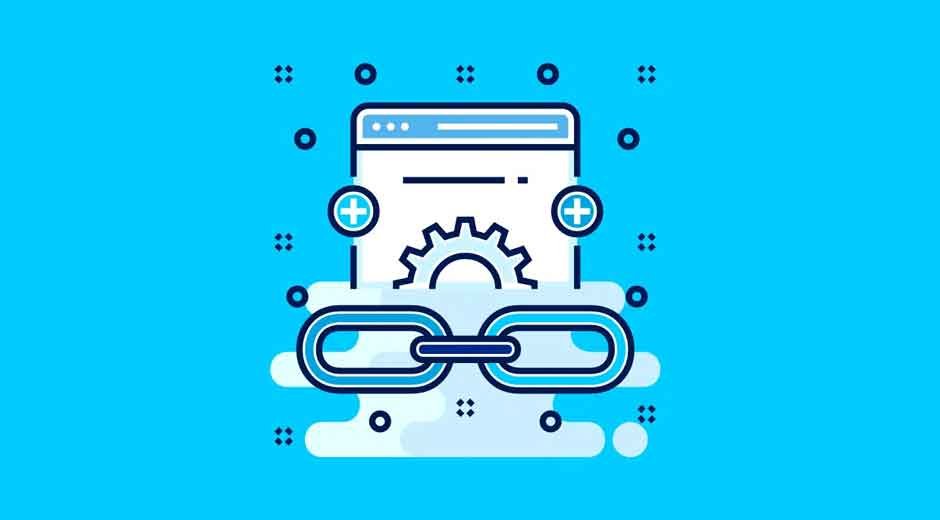Today, test automation keeps evolving to offer higher-quality results with enough validation, and the testing lifecycle has become extremely fast. Test automation frameworks are the foundation for automated testing. They organize how tests are developed, executed, and managed. Initially, test automation frameworks focused on tool-based techniques to automate testing procedures, such as creating scripts or running tests with record-and-playback tools.
While suitable for simple automated tasks, these frameworks have several drawbacks. They rely on specialized tools or technologies within established frameworks, which may result in vendor lock-in, in which the capabilities and limits of chosen tools restrict organizations. That’s where artificial intelligence (AI) comes in to simplify and improve tasks. Integrating AI into an automated testing framework has emerged as a solution to these constraints. AI testing skills assist in meeting the expectations for quick delivery and continuous integration in modern application development environments.
In this article, we will discuss what AI testing is and explore how AI is transforming the automation testing framework. In addition to that, we will cover the benefits of employing AI in automation testing and top AI testing frameworks to consider for the development team.
What is AI Testing?
AI testing uses artificial intelligence to improve and expedite the application testing process. AI-driven testing automates challenging tasks, increases accuracy by quickly detecting bugs and fundamental causes, and shortens test cycles, allowing teams to focus on more difficult and creative work. It can automatically gather data, run tests, and find defects and other affected tests, making the process more efficient and dependable.
It is a significant step forward in the automation framework. The primary concept is to leverage AI technology and algorithms to enhance application testing. This aims to increase testing efficiency, accuracy, and effectiveness.
AI can produce realistic test data automatically, removing the need for manual data creation when expanding the scope of testing scenarios inside an application. Incorporating AI guarantees that applications are resilient and reliable.
Key Components of AI in Test Automation
Machine Learning
It serves as the foundation for AI test automation, allowing models to identify trends, examine past data, and generate relevant predictions. To identify defect-prone places and anticipate possible sources of failure in test scripts, machine learning algorithms can analyze all previous test cases and results.
After code upgrades, certain application components tend to malfunction; machine learning (ML) could identify these issues and recommend locations where they might be fixed. It minimizes the use of various resources while speeding up the defect identification procedure.
Natural Language Processing
NLP enables machines to understand and interpret human language. This is essential for automating the process of creating test cases from text-based documents. By using this method, testers can create test scenarios or steps in any natural language, eliminating the need to type them manually. NLP also promotes collaboration between non-technical and technical stakeholders by reducing complicated requirements to easy and actionable test cases or scripts.
Data Analytics
It enables teams to navigate through huge numbers of test data to detect anomalies and find user trends and patterns. AI-powered technologies assist testers in identifying the underlying core cause or detecting recurring errors that would otherwise go undiscovered. They can also analyze performance patterns, allowing them to discover bottlenecks ahead of time.
Robotic Process Automation
It tackles repetitive, rule-based tasks by collaborating with AI to decrease human error and overall manual effort. Robotic process automation can help in the testing life cycle by automating operations like data collection and environment configuration. It also makes it easier to create and distribute thorough test results when the tests are completed.
Computer Vision
AI-powered computer vision technology can inspect and validate graphical user interfaces (GUIs), ensuring visual components perform properly across several devices and screen sizes.
Benefits of using AI-based Test Automation Framework
Enhanced Accuracy
As organizations strive to make testing and deployment faster and easier, AI in application testing has become increasingly important. Incorporating AI into testing procedures provides several benefits and positive consequences.
Expanded Test Coverage
The use of AI increases total test coverage by adapting to modifications in testing requirements. Artificial intelligence continually learns from prior test results. This leads to a dynamic and responsive testing procedure. It effectively resolves the complexity and variations that exist in modern applications. Furthermore, AI-automated testing improves the testing pipelines. It provides faster feedback loops and more agility in application development cycles.
Efficient Test Creation
AI speeds up test development by automating repetitive and tedious tasks. This boosts testing efficiency and quickens test cycles. It allows for faster issue detection and resolution, resulting in a shorter time to market.
Streamlined Test Maintenance
AI streamlines test maintenance by adapting to application changes and automatically modifying testing methodologies. This versatility guarantees that the testing procedure remains updated. It decreases the effort required for continuous maintenance, allowing testing teams to focus on their strategic tasks.
How AI is Revolutionizing Test Automation Framework
AI integration into the test automation framework serves a variety of purposes, all of which contribute to enhanced and quicker testing methods.
Test Case Generation and Optimization
With the use of user stories, application requirements, and historical test data, AI algorithms can generate test cases automatically. To ensure that significant pathways and unusual scenarios are accurately evaluated, these test cases are created to cover as much area as feasible. NLP enables AI to comprehend textual requirements and convert them into executable test cases.
Test Script Maintenance
The task of preserving test scripts becomes problematic due to frequent application updates. AI technology enables testers to lower their maintenance workload on test scripts through automatic script upgrades. This functionality guarantees that test scripts remain updated even in dynamic development environments.
Visual Testing
AI can do visual testing by analyzing and validating applications’ graphical user interfaces (GUIs) due to computer vision technologies. AI can recognize layout problems, visual irregularities, and differences in appearance between devices and screen sizes. Visual testing guarantees a consistent user experience and finds UI-related issues early in the development process.
Predictive Analytics and Defect Prediction
Data analysis by AI predicts upcoming technical errors and optimal improvement zones by evaluating past data records. AI enhances fault recognition while decreasing production-related major issues through testing priority on high-risk areas. Using this approach reduces post-release issues as well as improves application quality.
Self-Healing Test Automation
Test scripts that break as a result of application changes can be found and fixed using AI-driven self-healing test automation solutions. AI algorithms can detect changes in UI features or element locations and modify the test script accordingly. This self-healing feature guarantees ongoing test execution and eliminates the manual labour needed to maintain test scripts.
Continuous Testing and Integration
In agile contexts, continuous testing is essential to developing excellent applications. Through AI technology continuous testing occurs as test case executions are monitored during application development cycles. The integration with CI/CD pipelines performs automatic testing of code modifications so developers obtain instant feedback for fast resolution.
Natural Language Processing for Requirement Analysis
NLP enables AI to analyze documents, user stories, and textual requirements, extracting crucial information to build test cases. This ensures that the test cases meet the intended objectives and expectations. Confusion and misconceptions that may arise during manual analysis are decreased when requirement analysis is done with natural language processing (NLP).
Top AI Testing Frameworks
AI for automated testing framework significantly improves the capability of testing tools. It permits them to perform complicated tasks more efficiently and accurately. These frameworks use powerful AI to expand application testing beyond its typical functions. They automate testing and carry out complex activities, minimizing dependency on human testers. Let’s explore them.
LambdaTest
LambdaTest is an AI-powered test orchestration and execution platform. The platform allows testers to execute manual and automated tests at scale. Using this platform testers can conduct real-time and automated testing across over 3000 environments and real mobile devices. It is compatible with iOS and Android native, hybrid, and mobile web applications. Lambdatest’s ability to use the same WebDriver protocol for cross-platform testing streamlines the testing process by allowing testers to write a single test that works across various mobile platforms.
Unlike other AI testing tools and platforms, LambdaTest offers AI-driven capabilities including self-healing tests, intelligent auto-waits, automated test data creation, and parallel test execution across several real devices and browsers to streamline test automation. The platform also works smoothly with common CI/CD technologies, making it an excellent choice for continuous testing environments.
Key Features
- AI-Powered Test Data Generation: Eliminates the need for manual test data preparation by dynamically generating realistic test data for various circumstances. This makes test runs more efficient and increases coverage.
- Real-Time Debugging: Provides real-time feedback through detailed documentation, images, and video recordings, assisting developers in identifying and resolving issues before they grow.
- Robust Security Features: To ensure data safety and adherence to industry standards, all testing is conducted in a secure, encrypted environment.
- Visual AI Accuracy: LambdaTest stands out with its use of visual AI to accurately detect and analyze visual variations in applications, guaranteeing flawless rendering.
Testim
Testim is an AI-powered test automation solution that streamlines the production and management of automated tests. It is ideal for web-based and mobile applications as it uses generative AI and machine learning techniques to develop, run, and manage test cases.
Key Features
- Test Scheduler: Using APIs for integration with CI/CD pipelines for continuous testing, or scheduling automated execution of tests.
- Automated Test Maintenance: By automatically updating and maintaining tests, the tool expedites the testing process and guarantees that it continues to function well as the application develops.
- Intelligent Test Framework: With a focus on intelligent test maintenance, Testim offers teams an effective and adaptable framework for continuous testing.
Applitools
Applitools offers cutting-edge tools for visually evaluating user interfaces and specialises in visual AI testing. It is frequently utilised in applications like financial services platforms and e-commerce that demand a consistent user interface (UI) across several devices.
Key Features
- Seamless CI/CD Integration: Easily integrates with frameworks like Jenkins and Azure DevOps, enabling continuous testing.
- AI-Powered Test Case Generation: AI is used to generate optimized test cases, which improves efficiency and coverage.
- Efficient Visual Testing: Applitools’ emphasis on quick discrepancy identification improves the productivity of visual testing, making it an invaluable resource for teams with visual quality needs.
Functionize
Functionize operates as an artificial intelligence platform which controls end-to-end quality assurance automation. It uses generative AI from test generation to execution and maintenance. Functionize uses machine learning to comprehend and adapt to changes, eliminating the need for human test updates.
Key Features
- Advanced AI Integration: Functionize uses cutting-edge AI and machine learning technology to create, execute, and maintain tests with high autonomy.
- Adaptive Automation: With an emphasis on decreasing human effort, Functionize dynamically adjusts to changes in the application, optimizing testing procedures and creating a durable testing framework.
- Efficiency Optimization: The tool’s powerful automation features help to increase testing productivity, making it an invaluable resource for organizations looking to optimize their testing operations.
Conclusion
In conclusion, implementing AI in a test automation framework helps organisations to reduce testing periods. It can create test cases intelligently and predict analytics to detect errors. Its innovative features like machine learning, natural language processing, and computer vision advancements are leading to significant improvements in test coverage, accuracy, and efficacy.
With reliable AI-driven automated testing solutions, testers can achieve more productivity, improved application quality, and lower expenses. They can quickly detect and fix performance issues and errors before and after deployment, ensuring optimal quality and an exceptional user experience on each deployment.




